封面
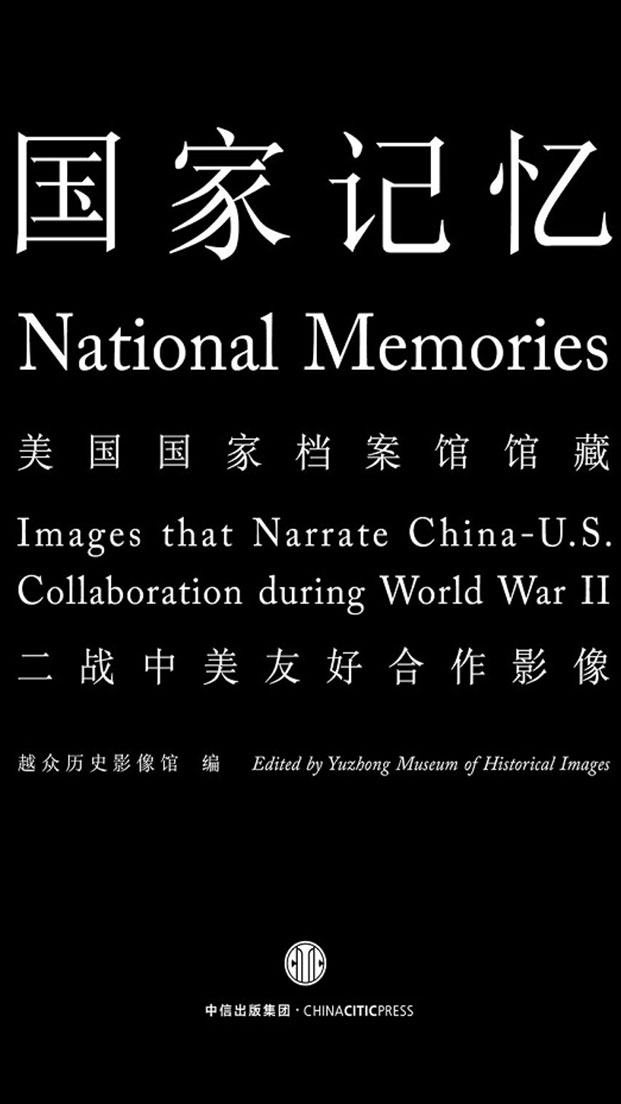
插圖
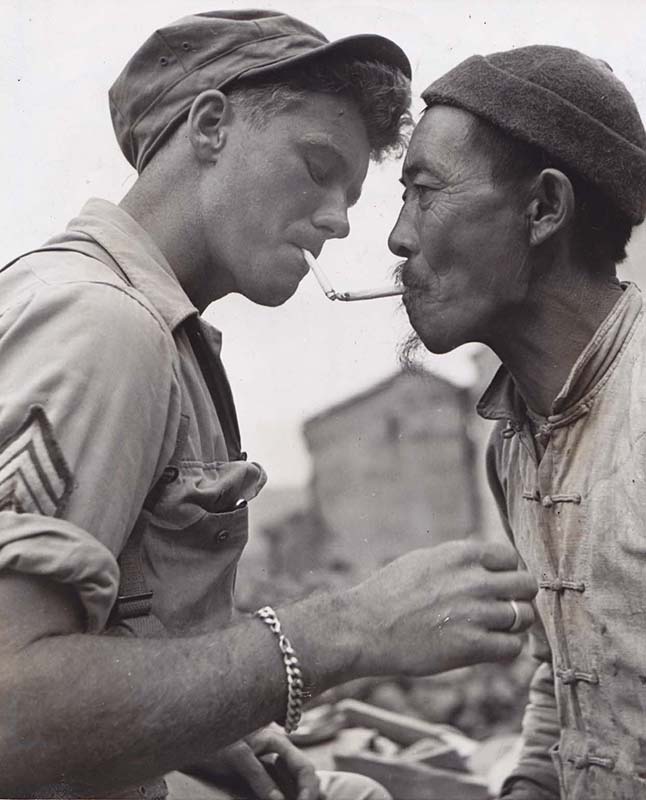
謹以此書,獻給曾為抗戰負累重重的中國人民,並向為捍衞自由和平遠赴重洋的美國老兵,為保家衞國英勇奮戰的中國老兵,致以最崇高的敬意!
The book is presented, with great respect, to the Chinese who suffered a great deal in the Second Sino-Japanese War, the American veterans who traveled across the Pacific Ocean to fight for peace and freedom, and the Chinese veterans who fought and sacrificed for our country.
烽火連天的生死前線 Fire and Smoke on the Frontline
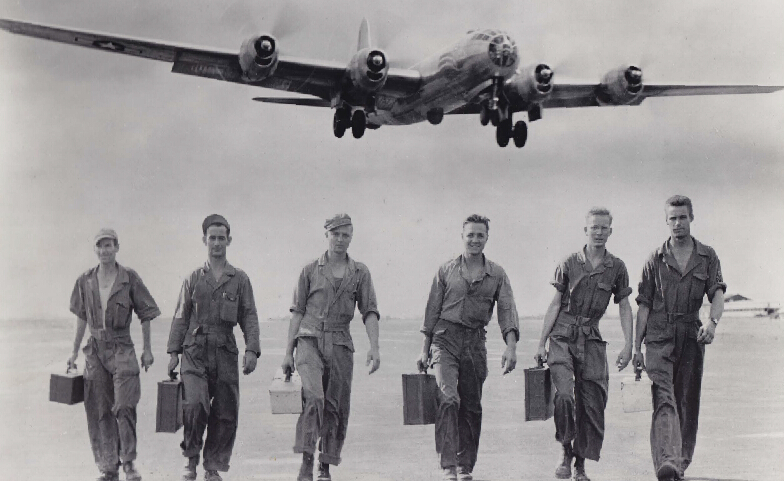
疲倦地返回基地之後,一架波音B-29 轟炸機再次騰空而起;從它的肚子下面鑽出來的兩位飛機工程師,剛剛填補了它身上的高射炮彈孔,替換上脫落的起落架。在維修保養中心,飛機工程師們晝夜不停地工作,更換零件、修理保養、調試,目標一致地將這架巨型轟炸機送上天空。這群開心的地勤人員從停機坪走過來,對自己的工作心滿意足。左起:麻省的弗蘭西斯·達利技術軍士、路易斯安那州的弗蘭克林·布萊恩一世技術軍士、堪薩斯州的孿生兄弟勞倫斯·華納及列那多·華納技術軍士、威斯康星州的喬治·科雷恩技術軍士、俄亥俄州的尤金·菲爾雷技術軍士。
A Boeing B-29 soars again after she limped home, came in on her belly, two engines out, gaping flak holes in her undercarriage, and the landing gear gone. In the depot engineering area, airplane mechanics and specialists worked around the clock replacing, repairing, adjusting and making the giant bomber ready to fly again. It' s a happy crew of depot mechanics that walks from the flight line, satisfied with a job well done. From left to right: S/Sgt. Francis L. Daly, Dorchester, Mss. Sgt. Franklin W. Brian, Sr., Shreveport, La., Sgts. Lawrence C. And Leonard-J. Werner , twin brothers from Spearville, Kan., Sgt. George P. Klein, Kiel, Wis., and Sgt. Eugene W. Fiely, Fort Recovery, Ohio.
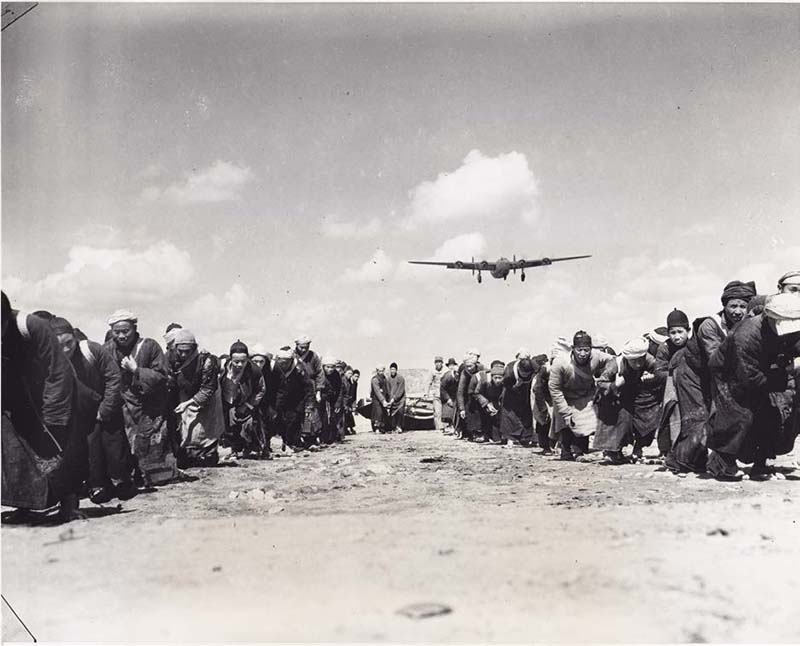
1944年3月31日
現代機械的缺乏沒有阻礙中國修建現代化的機場的步伐。三十萬的民工被徵調來修建機場。十萬台獨輪手推車被用於運送修建機場的材料,連鋪設跑道的石子也是由民工手工敲碎的。美國的工程師們和中國工程界的專家攜手,負責指導機場修建工作。圖中所示:現代機械和傳統的人力形成了強烈對比,中國民工們就像火車頭一樣在支持著中華民族的解放之路——他們用盡全力地拉動巨大的石碾子來完成跑道的壓平工作。
弗蘭克·坎德拉爾拍攝
3/31/44
Lack of modern equipment and machinery isn't stopping resourceful Chinese from building modern airfields in China. Three hundred thousand Chinese workers have been conscripted to do the job. A hundred thousand little handmade wheelbarrows are used to transport materials — and even the chipping of stones for the runways is done by hand. American engineers are supervising the work, in conjunction with expert Chinese Army engineers. Photo shows: drawing a sharp contrast between modern machinery and medieval labor, this liberator roads over a group of coolies as the train at the back–breaking job of hauling a huge stone roller over the runway.
(Photo by Frank Cancellare)
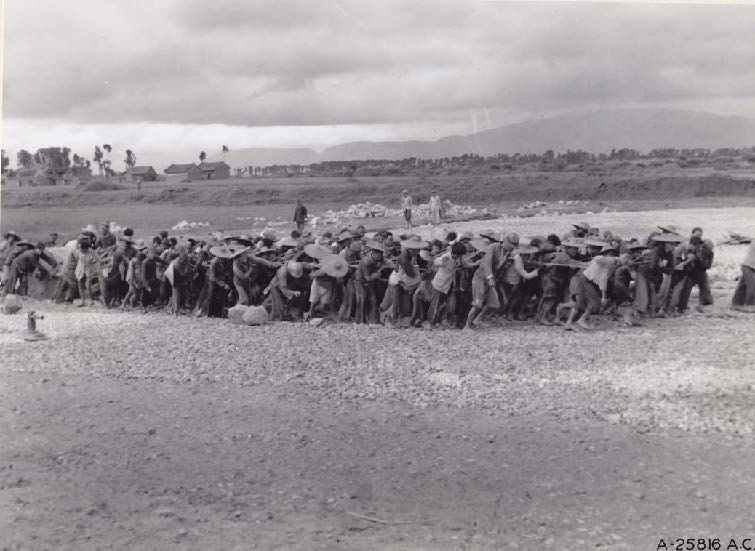
中國
在建的中國機場:民工正在拉動石碾子進行最後的鋪平作業。
China
Construction of a Chinese airfield: the final mashing is finished with the roller.
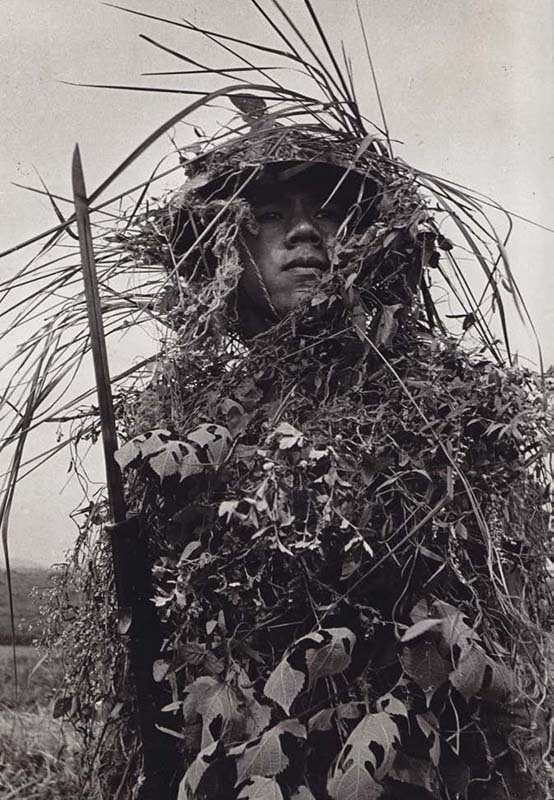
戰時中國
為防止偽裝物的掉落,中國步兵將偽裝物縫在了自己衣服的網上,這樣可以更好的遮擋身體。
China At War
This Chinese infantryman's camouflage is tied to nets, so that it stays in place and covers him from his helmet to his hips. 686-P
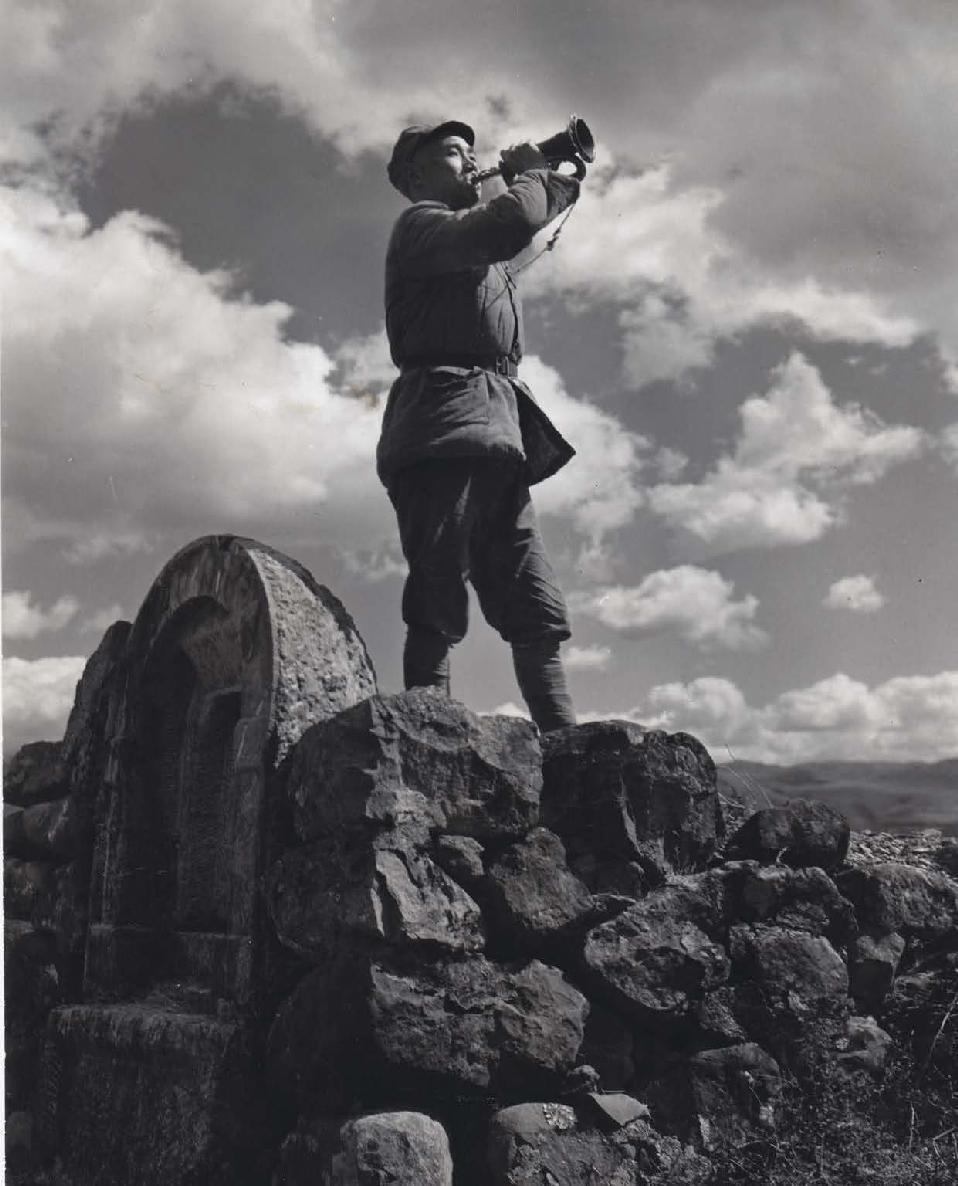
1944年6月4日中國軍隊訓練中心的起床號
站在一座古墓上,一名中國號手吹響了起床號,喚醒在中國西南部陸軍營訓練的同志們。
6/4/44 Reveille at Chinese Training Center
Standing on the top of an ancient tomb, a Chinese bugler sounds reveille to awake his comrades training at an Army Camp in Southwest China.

1943年1月13日美國空軍在華對日作戰
在中國某處,當空襲警報拉響時,穿戴好降落傘的美國飛行員們飛快地跑向他們的戰機,升空驅趕來犯的日軍飛機。這些駕駛美國飛機的隊員在飛機引擎下方做了鯊魚鼻的塗裝,以此奚落害怕鯊魚的日軍。陳納德准將的空中力量也包括一直定期轟炸日軍據點的轟炸機隊。
1/13/43U.S.Airmen Battle Japanese in China
With parachutes flopping,U.S.pilots run for their fighter planes to give chase to the Japanese as an air raid warning sounds"somewhere in China".Such squadrons,using U.S.Planes,paint ashark's mouth underneath the engine to taunt the shark-fearing Japanese.Brig.Gen.Claire L.Chennault's air forces also include bombers,which have been blasting Japanese installations regularly.
